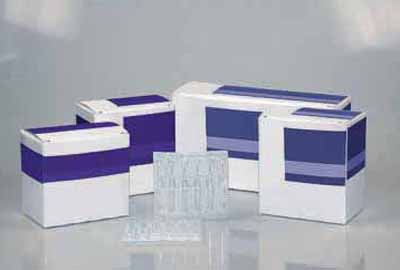US-based blow-fill-seal contract manufacturer Ritedose Corporation has expanded its ampoule packing capacity with the help of Sigpack Systems
The Ritedose Corporation (TRC), a leading blow-fill-seal (BFS) contract manufacturer located in South Carolina, US, has expanded the capacity of its packaging system several times for the primary and secondary packaging of inhalation solution products. To increase its capacity still further, TRC turned to Sigpack Systems, which has provided the company with highly flexible, high-output packaging systems.
TRC operates its packaging lines 24/7 and the lines are very flexible with multi-format capability. Sigpack Systems designed the original system in such a way that it could potentially have additional packaging legs to increase TRC’s packaging capacity further.
‘When placing the original order, the customer emphasised the importance of having a system that could be extended in a flexible manner at a later date, and which would be adaptable to changing market needs,’ said Jörg Kleiner, Sigpack Systems’ head of pharma sales. ‘Even when adding this extension, we have allowed for the option of incorporating more packaging legs in the future.’
The TRC packaging system receives the vial cards in bulk containers. A vibratory feeding device unscrambles the vial cards and feeds the products to a double Delta LDF robot cell, which recognises the vials using a vision system and places them, correctly aligned, into the infeed chain of a pillow pack machine. The precision of the robotic units meets the challenging task of stacking these products at high speed into the continuously running lug chain of the wrapper.
The use of the Delta robot technology makes format changeover easy for operators – they simply select the new recipe on the user interface (HMI) and upload the data by pressing a button.
The stacked vials are passed on to the HBL horizontal pillow pack machine. To achieve tight hermetic packs, the pillow pack machine is equipped with an air extractor and mechanical gusseting. Water-cooled cover plates above the sealing unit protect the product from radiated heat. A printer then labels the pillow packs with the batch number and expiration date.
In the next stage, the finished pillow packs move on to the product grouping device of the TTL top-loader. At the other side of the top-loader the cartons, produced on a TTF carton erector, are fed in for loading. The top-loader then groups the correct number of cartons for each batch underneath the gripper, forms a stack of pillow packs (the type of stack depends on the packaging format), and loads them into the cartons.
Once loaded, the cartons move from the top-loader to the inline closer, which folds down the dust flaps and inserts the front flap. A TBLi case packer then finishes the carton packs for final shipping.
The modular Sigpack Systems top-loader platform provides the base for almost endless variations. The TBLi case packer and the TTL top-loader differ only in the combination and arrangement of their modules. For example, the case packer does not always require a sophisticated grouping device as this function can also be carried out by a more straightforward transfer unit. In addition to its reliability in continuous use, the entire Sigpack Systems top-loader family is notable for its rapid and reproducible format changeover, without the need to change a large number of parts.

Packaging solutions for inhalation drugs
